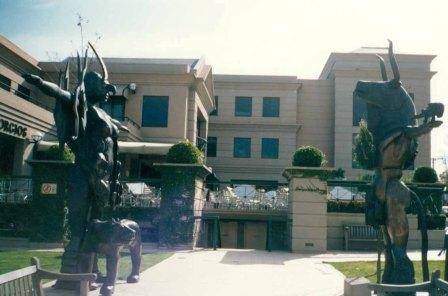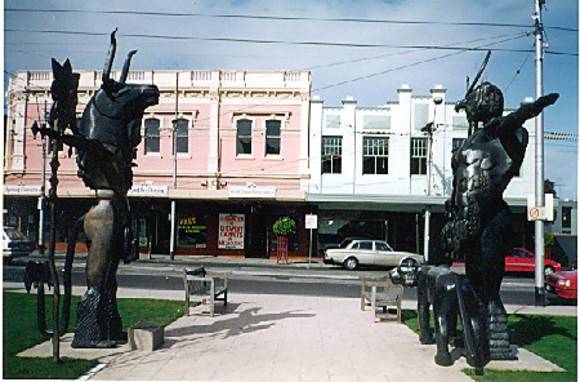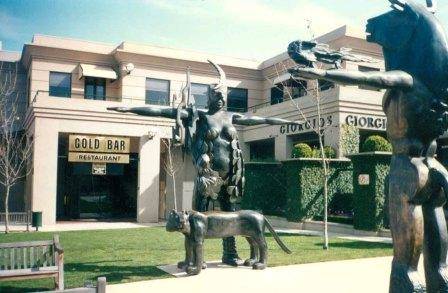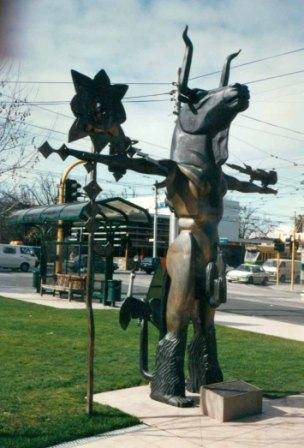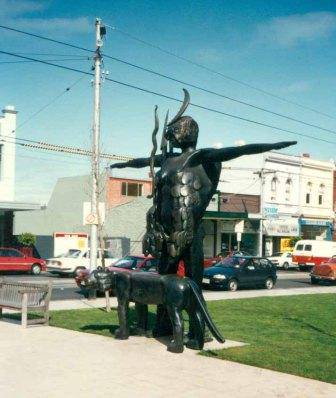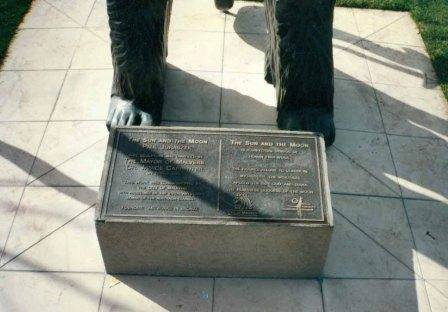| Back to search results » | Back to search page » |
|
The Sun & The Moon Sculpture - Paul Juraszek
LocationCnr Glenferrie Road & High Street,, MALVERN VIC 3144 - Property No B6515
File NumberB6515LevelState |
|
Statement of Significance
What is significant? The sculpture The Sun and the Moon, 1989, is significant as a public work of art at the State level. The sculpture consists of two standing figures, 2.5 - 3 metres high, plus a life-sized lioness - all cast in bronze. The figures of the Sun and the Moon face each other on either side of a pedestrian pathway in the City Square, opposite the former Malvern Town Hall, on the north-west corner of High Street and Glenferrie Road, Malvern. The sculpture makes a visual link between the Classical Revival style of the 1889 Town Hall (with its triangular pediment of Greek origin) and the 1989 Post-Modern reference to Egyptian and Greek sculpture.
The work 'celebrates the past, present and future', and represents the unity of complementary forces of elements of nature and humankind, conjuring up issues of aspiration, wonder, magic, reality and fantasy. More specifically, the work is rich in classical imagery, with the figures evoking Apollo the Sun God, Diana the huntress goddess of the moon and the Minotaur. 'The Sun and the Moon' reminds us of the triumphal arcade of sculpture found in major public squares in the Ancient World.
How is it significant? The sculpture is significant for aesthetic and cultural reasons at a State level.
Why is it significant? The sculpture is significant as it is one of the very few major commissions of public sculpture by a suburban council in Melbourne at that time. It is also significant as probably the first example of Post-Modern sculpture in Melbourne - prior to the commission of Cultural Rubble by Christine O'Loughlin for the facade of the Ian Potter Museum of Art, University of Melbourne, installed in 1993.
Postmodernism is described in a publication by the Tate Modern, London (2006), as a broad range of cultural tendencies that emerged as a reaction to modernism during the second half of the twentieth century. The term Modernism itself is applied to a vast and diverse group of art and artists, many with competing or contradictory characteristics and this is equally true of Postmodernism. Postmodernism revels in broadly pluralist approach, celebrating outmoded genres, art-historical parody, surface decoration and up-front social commentary.
Protests on the installation of these sculptures were vehement, reflecting political, moral and aesthetic attitudes of the time.
This sculpture remains the only public sculpture to be commissioned from this significant artist who works in a highly individual and eclectic style.
Classified: 14/09/1994
Revised: 03/09/2001
Group
Public Art
Category
Sculpture


